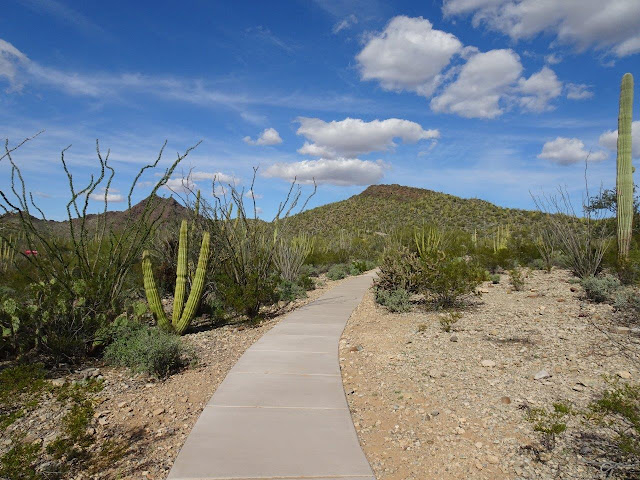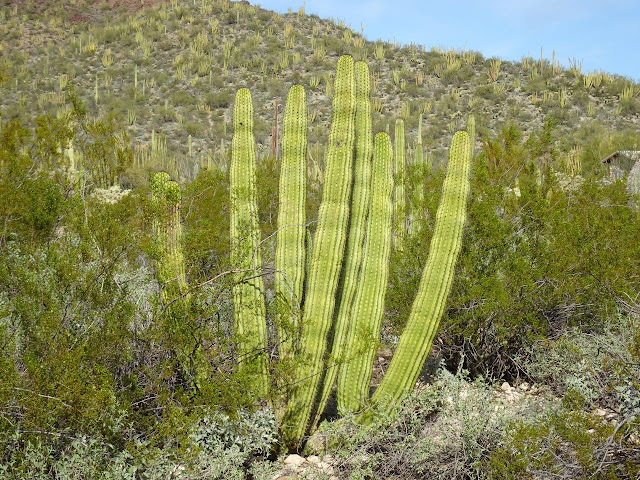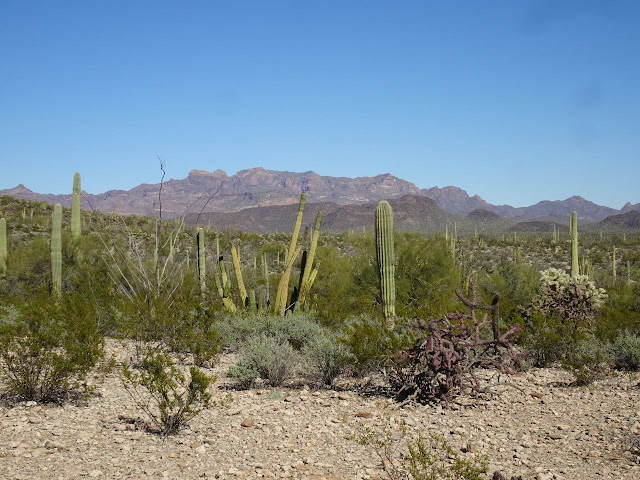I met some old friends at this museum today. They are visiting in the area, but have never been here, so I hoped they would enjoy it. We spent most of the day looking at cactus and catching up on news.
But before I post photos, I want to let you know that this place has terrific parking for big vehicles like my motorhome. When you drive up the hill, there are signs directing you to the bus and RV lot. Only problem on this day was that a lot of cars were parked here, taking up many of the spaces. This made no sense whatsoever because there were lots of spots closer to the garden entrances!! Why are they parking here? Luckily, one of the security people saw me pull in and followed me to the lot. She had previously blocked off several sites with orange cones, so she removed several and directed me in! And unlike a lot of other bus and RV parking places, this one is to the side of the entrance, not several hundred feet away in a dirt lot somewhere! Very nice to have a paved, dedicated parking area. (If you are driving a car someplace, PLEASE do not park in the only places that big vehicles like mine can park. 😁)
Anyway, back to the botanical gardens. This is one of my must-visit sites whenever I am in the area. Today was chilly, but there is no better place on a cool, but not hot, day to just walk around and relax on a bench! Also, they have a very nice garden shop that sells plants and other souvenirs, and there is a casual outdoor cafe and an indoor/outdoor fancier restaurant and wine bar.
These are some glass sculptures left here at the entrance after an exhibition by glass artist Dale Chihuly, several years ago. I was able to visit during that exhibit and posted some photos here.
Immediately after the entrance, you will find rental powered and non-powered wheelchairs for people who cannot walk long distances. The garden is surprisingly big, and while the walking is easy and there are places to rest, for some people a powered chair can be very helpful.
The next few photos are just random photos of the garden and walkways.
One of the sculptures on exhibit in the garden. Most did not look like anything specific, so we assumed you were supposed to imagine them as being whatever you chose.
A map of the main and the many smaller paths around the garden.
This big saguaro has a lot of holes in it from cactus wrens who use these for homes. See the explanation below. Cactus wrens are small spotted birds, and their nests do not damage the cactus. Living in a cactus means your eggs and chicks are protected from nasty snakes.
This is a crested saguaro. No one knows for sure what causes this strange formation on the top, but these are extremely rare and prized by museums and botanical gardens. Here is an article that describes them in more detail: https://media.azpm.org/master/doc/crestedsaguaro/
Part of the gardens include an exhibit of Native American life. On weekends and busy days, there are often demonstrations of food preparation and crafts in these native shade structures.
This is one of the very few plants in bloom right now. It is still early in the season and a bit chilly, but in a month or two, more cacti and wildflowers will be in bloom--and it will get even better in March!!
It took a lot of bad photos to get one good one of this little ground squirrel because he kept moving!
And the last of my photos for this trip. Will be back in about a month to see what is in bloom then because I will be hanging around Phoenix for the next few weeks.






































 \
\














